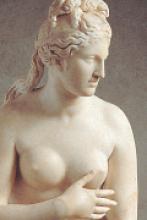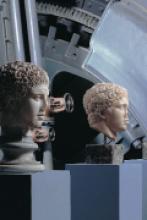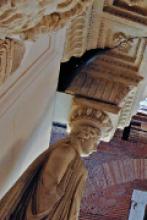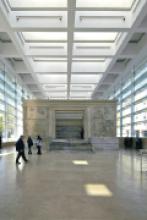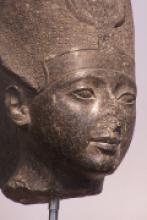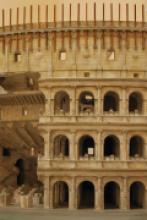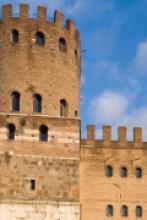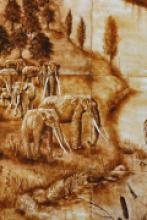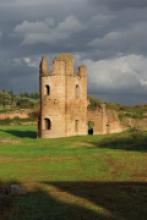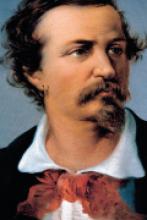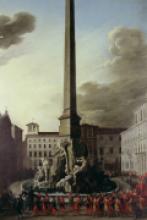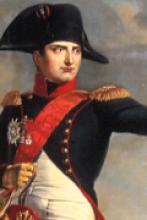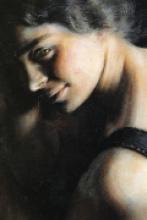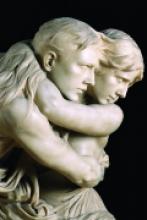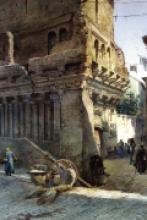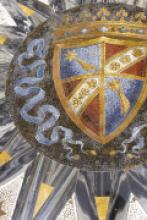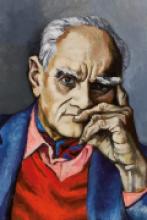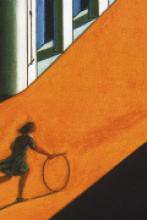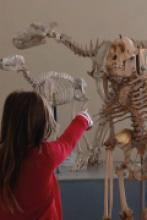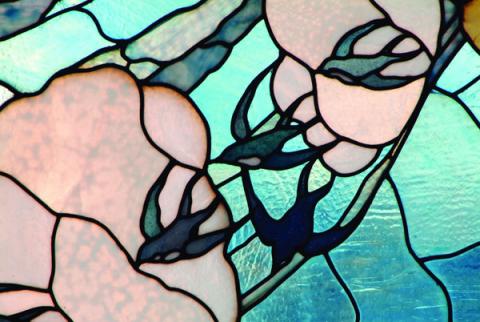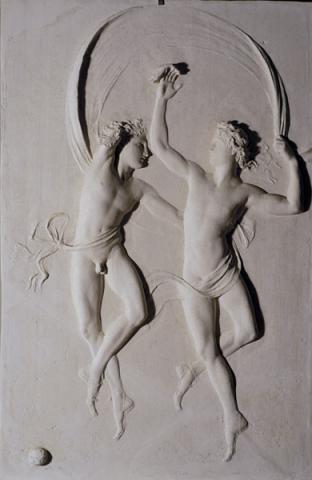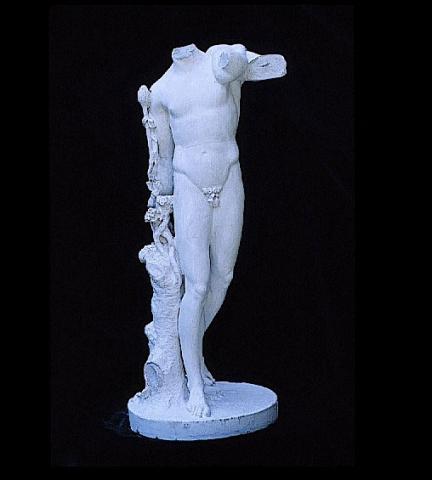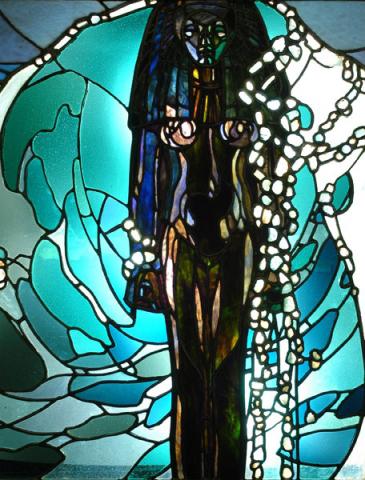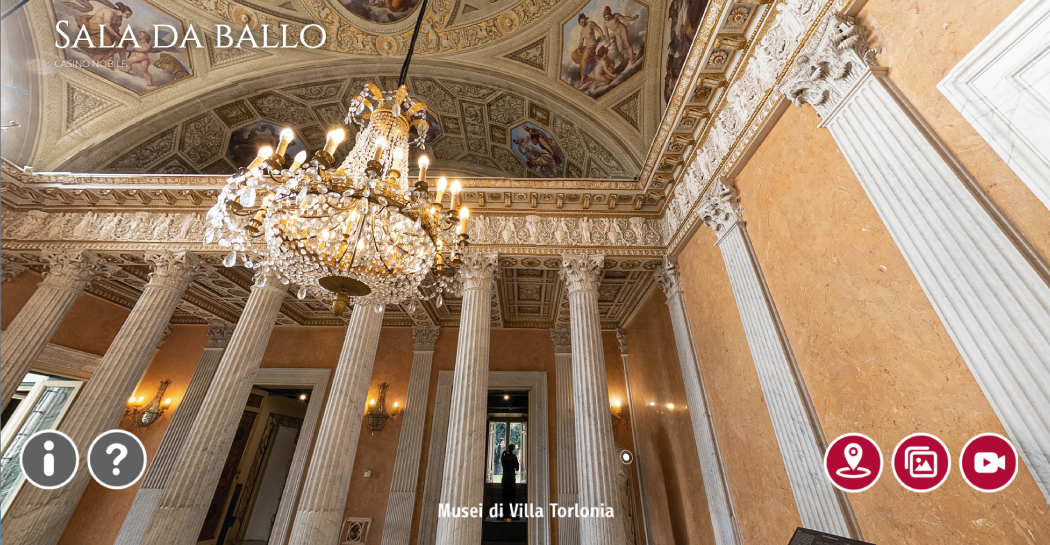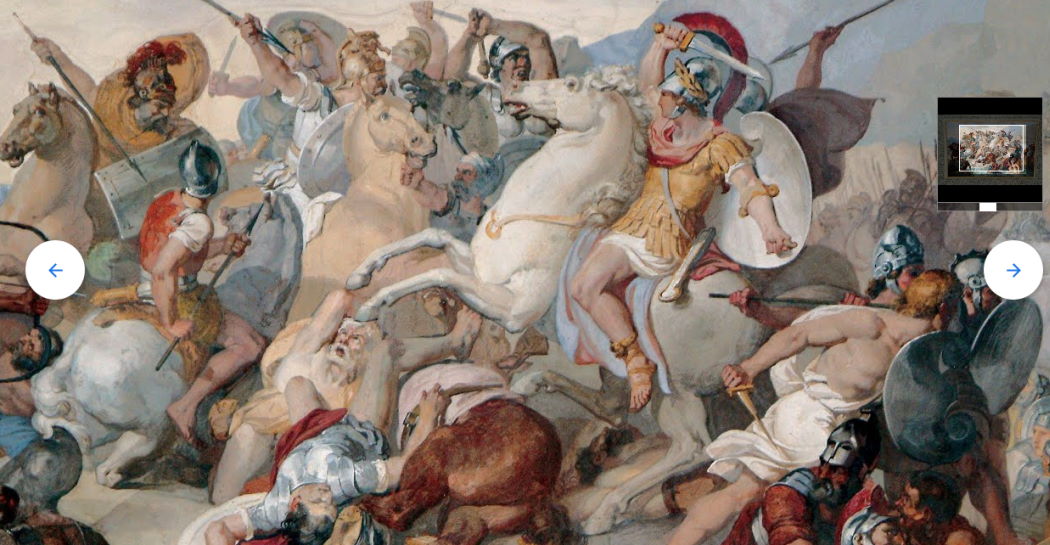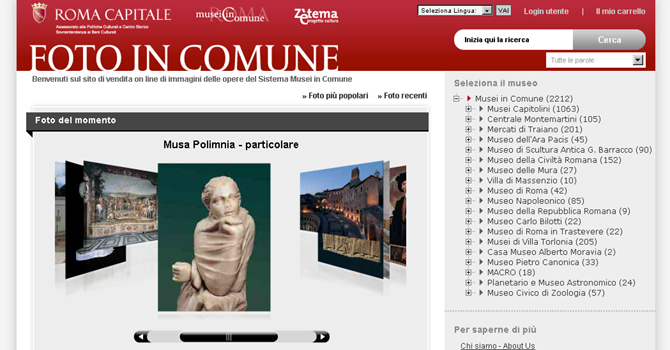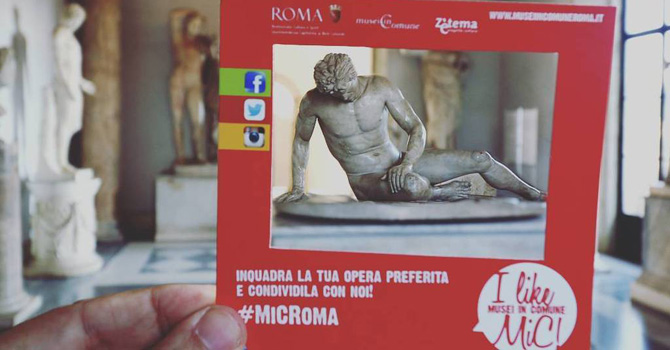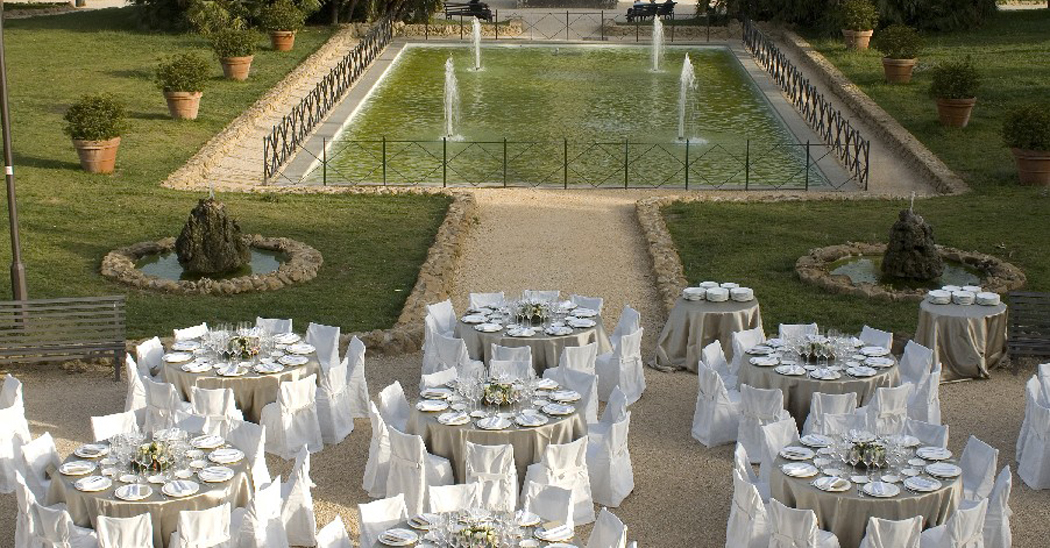The Room of the 24 Hours
This room, positioned in the octagonal cupola, is the most richly decorated in the house. In Jappelli’s original design, it was a simple country kitchen. However when the house was transformed at the beginning of the twentieth century, at the wish of Giovanni Torlonia, it became a sitting room for the Prince.
The vault of the cupola, which was painted in 1909 by Giovanni Capranesi, is divided into eight panels, demarcated by stucco, which depict the 24 hours dancing among rose tendrils. They are represented as charming children, draped with diaphanous veils, who frolic in groups of three against a blue sky.
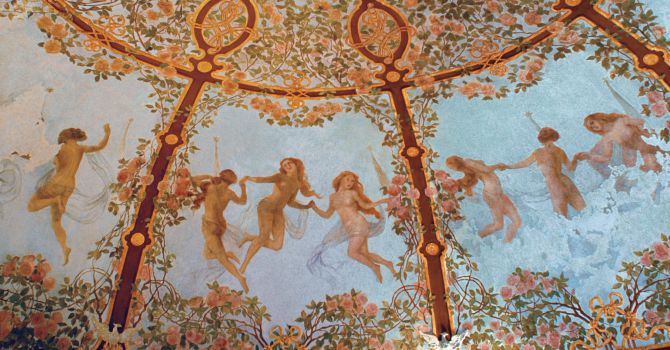
The backdrop is painted with comets, which, along with roses, are the heraldic symbols of the Torlonia family. The decorative scheme is completed by a central tondo with stucco cornices, which repeat the rose motif.
At the base of each ceiling rib there is a stucco relief depicting a phoenix rising from the ashes. The room is clearly intended as a glorification of the Torlonia family, who are symbolised by the roses and comets, and the celebration of their eternal fame, as alluded to by the phoenix and the hours.
The small windows that illuminate the room have clear glass, with bevelled frames, made according to an elegant design using sticks of bronze.
The floor is decorated with a polychrome nineteenth century mosaic, which depicts Mars and Venus and comes from the House of the Princes, and is framed with coloured marble.
The mosaic was transported and put in place in 1910 on the orders of Prince Giovanni Torlonia, who wanted to use the house as his new residence, as the House of the Princes had, at that time, become an administrative office.
The walls were once covered with precious damask cloth, silver and gold in colour, but it has since been lost.


